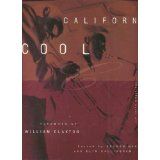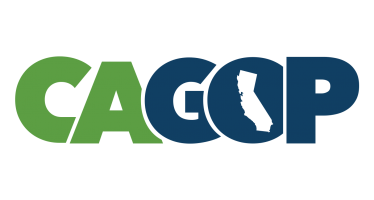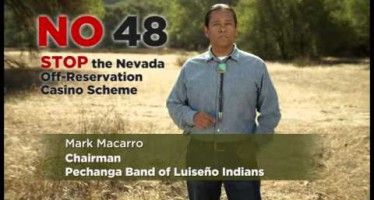Uber shows CA cool still beats regulators

 This has been a big year for Uber. The ride-for-hire app became a mainstream phenomenon, but attracted more than its fair share of criticism and legal scrutiny.
This has been a big year for Uber. The ride-for-hire app became a mainstream phenomenon, but attracted more than its fair share of criticism and legal scrutiny.
And the Uber saga is just getting started. A fresh wave of initiatives — and the press to match — has touched off a fascinating phenomenon. Although a corporation weaker than Uber would be thought of as embattled, Uber’s tremendous appeal has proven strong enough to keep the company one step ahead of its detractors.
In recent years, critics and supporters of California’s ruling Democrats have voiced concern about the future of California’s unique cachet. On the right, observers have warned the Golden State’s tangled regulatory environment has choked off business development and sent residents packing for more economically friendly states like Nevada and Texas.
Many factors were behind California’s shift from a state that attracts new residents to a state that repels old ones. For the political psychology of elite Californians, however, the demographic change seemed to warn the state that it couldn’t count on its innate appeal to attract tourists and keep residents rooted for decades.
Reinforcing the troubling notion that California was losing its cool, key employers and industries began trickling away. From auto manufacturers like Toyota to Hollywood film and television producers, business leaders started shifting real jobs away from the West Coast.
The predictable result was political grandstanding matched with controversial incentive packages. Sacramento notched a small success in throwing valuable tax credits at production companies, but failed to muster enough sweeteners to satisfy the likes of Elon Musk.
The return of California cool
Much of Silicon Valley, however, seemed destined to stay put — thriving off the intimate relationships among the region’s venture capitalists, innovators, CEOs, students and high-demand employees. Although 2014 saw a wave of bad press for so-called “nerds” taking “revenge” on Californians who wanted affordable rents and a more traditional labor-reliant economy, Uber has proven to be the exception to the rule in some respects.
The company has been hit with a range of accusations — undercutting its competitors in dirty fashion, steering its drivers toward subprime loans, even taking advantage of drunk people with surge pricing.
Some other recent reports are more ambivalent. Uber’s plan to recruit 50,000 veterans, who sometimes find surprising difficulty securing employment, has been met with some guarded optimism. Uber has remained remarkably resilient, weathering these storms with a wave of good press.
In the latest prominent example, The New York Times ran an extensive, praiseworthy review of Uber’s role in revitalizing downtown Los Angeles. Importantly, the main reason for Uber’s success, according to the Times, was its cool factor.
In times past, California cool had practical applications. Rather than just whetting people’s appetites for glamour or fashion, the entertainment and tech industries actually secured residents in stable communities with great economic power. Uber, suggested the Times in its report, has started to do something similar, on a smaller scale, in downtown L.A.
According to the Times, “a growing contingent of urbanites” have now “made Ubering (it’s as much a verb as ‘Googling’) an indispensable part of their day and especially their night life. Untethered from their vehicles, Angelenos are suddenly free to drink, party and walk places. Even as their business models are evolving, these ride-sharing services, which include Lyft, Sidecar and others, have upended the social habits of the area, and rallied its residents to be more peripatetic.”
Big implications
The impact, said the Times, goes well beyond L.A.’s hard-to-navigate urban core. Not long ago, L.A. nightlife “used to involve negotiating parking, beating traffic and picking a designated driver. Excursions from one end to the other — say, from the oceanfront city of Santa Monica to the trendy Silver Lake neighborhood on the eastern side — had to be planned and timed with military precision, lest they spiral into a three-hour commute. More often than not, they were simply avoided.”
No longer. The whole city has won out — with big economic and social benefits that could be replicated across the state, or the country.
The Times report helps underscore the reason why Uber has become so consequential. Much like Apple, a pillar of the California economy, Uber has established a dual appeal — to everyday Americans on the one hand, and to fastidious elites on the other.
Despite excesses and mistakes, Uber’s ambitious use of practical cool has made it hard for critics, including regulators, to crack down. Ordered by the California Public Utilities Commission to cease its new carpool feature, Uber simply declined, proceeding with its planned rollout.
Regulators are still thinking over what, if anything, to do next.
Related Articles
CA GOP labors to keep top talent
With an underperforming field of gubernatorial candidates and no dominant figures leading the party, California Republicans have found themselves hard
Election night: What to watch in CA election results
The polls will remain open for a few more hours in California, but it’s already safe to call the winners
Prop. 48: Pechanga opposes expansion of tribal gaming
A Native American tribe is spending big bucks to limit the expansion of tribal gaming in California. The Pechanga Band




